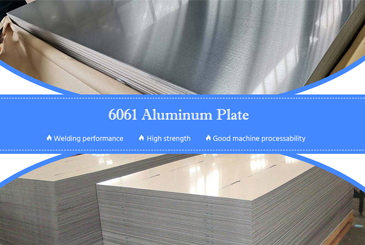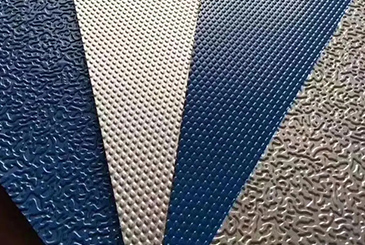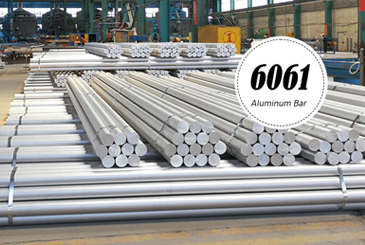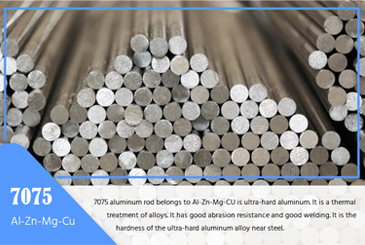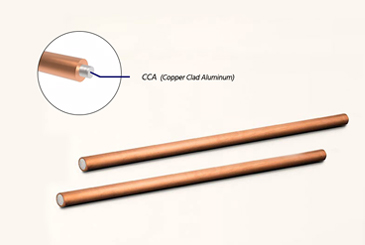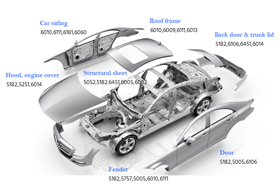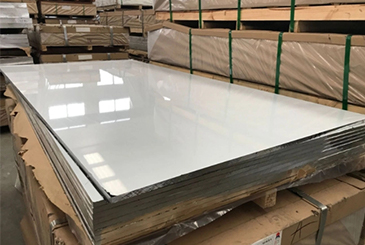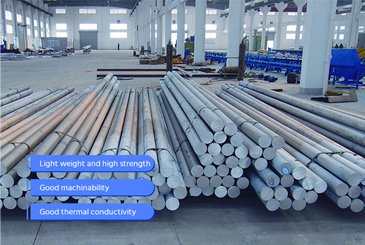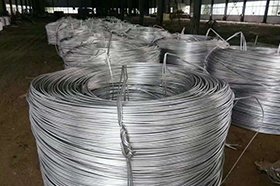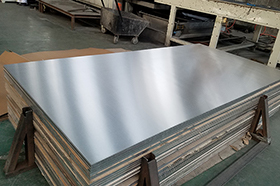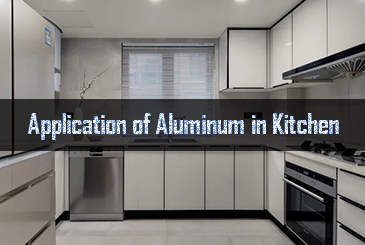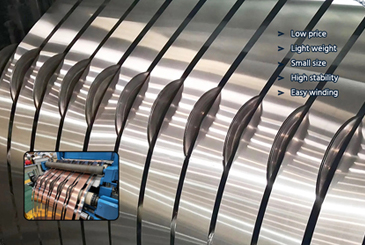Seamless Rolled Ring Forging is one of the key processes for manufacturing high-strength, high-precision annular structural parts, and is widely used in aerospace, energy, military, chemical, rail and other engineering fields. Compared with cast or welded rings, seamless rings have better structural density, mechanical properties and dimensional stability, and are the preferred material form for many high-end structures.
This article will systematically introduce the manufacturing process, process path and forming method of seamless rolled ring forgings to help you deeply understand its core advantages and accurately meet actual application needs.
What is Rolling Ring Forging?
Ring forging is a metalworking technique that begins by forging a circular preformed piece of metal. This initial piece is first upset and then punched to form a donut-like shape, also known as a torus. It is then heated to a temperature above its recrystallization point and placed on a mandrel or idler.
The idler pulley guides the perforated ring structure to the drive roller, which continuously rotates to reduce the wall thickness of the ring body while uniformly expanding its inner and outer diameters. This process ultimately produces a product called a seamless rolled ring.
The roll ring forging method can produce seamless metal rings of various sizes, which are ideal for machine tools, turbines, pipes and pressure vessels. This technology greatly improves the mechanical properties of the forged metal and maintains its grain structure.
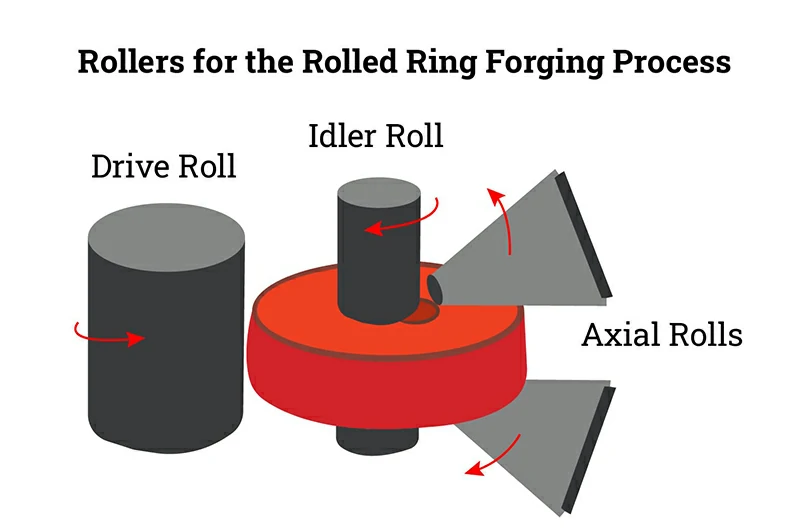
Standard manufacturing process for seamless rolled rings
The manufacturing of seamless rings is not a simple rolling operation, but a rigorous process system covering multiple high-temperature deformations, structural adjustments and precision machining. Chalco adopts an integrated path of "free forging + CNC ring rolling", supplemented by heat treatment, processing and quality control systems, to complete the closed-loop manufacturing from raw materials to finished products. The following is a detailed explanation of Chalco's standardized manufacturing process:
Raw material preparation
We use high-purity aluminum, titanium, and steel ingots, cut them to specific lengths based on process requirements, and manage them with unified numbers to enable traceability.
Free forging blank - roughing
The initial stage of the rolled ring forging process involves taking a blank (usually cylindrical) and subjecting it to an upset operation. Upset forging prepares the workpiece by deforming it to the desired diameter, height and shape, thereby increasing its cross-sectional area. This deformation is achieved by applying a large horizontal pressure through a hydraulic press, which forces the workpiece to expand along its length axis.
During upsetting, the die compresses the workpiece beyond the limits of the press while it is at its plastic deformation temperature. This open die process involves pressing a cylindrical body between upper and lower dies and can be hot or cold.
Heating a workpiece for upsetting causes a change in the metal's grain structure because heating affects the metal's crystallographic phase. When heated past the austenite phase, the metal changes from a body-centered cubic lattice to a face-centered cubic lattice. In the austenite phase, the metal becomes soft and ductile, making it easy to form.
Upset forging is a common forging method that can be used to quickly and efficiently form multiple workpieces. Upset forging is a method used to form bolt heads during the cold forging process. An upsetting machine has a punch that moves horizontally against the workpiece. The result of the horizontal stroke is an increase in the volume and shape of the workpiece.
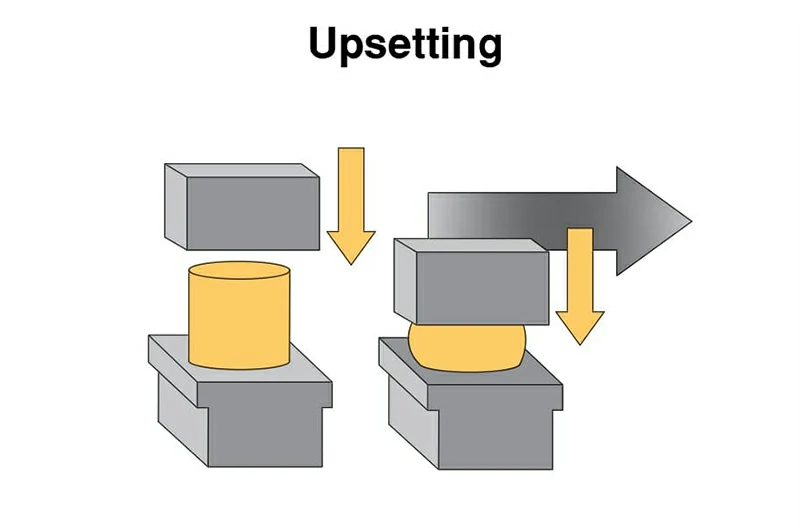
Piercing – forming a ring shape
During the seamless rolled ring forging process, the center of the workpiece needs to be removed. This step is referred to by various terms such as punching or shearing and involves creating a hole in the middle of the workpiece. The spacing between the die and the punch is determined by the thickness and strength of the workpiece, which also affects the load or pressure applied to the tool cutting edge.
The piercing process produces a circular, annular workpiece. Unlike drilling, piercing does not cut into the workpiece, but rather creates an opening by pushing a punch, which deforms the metal radically, leaving a thin web at the bottom of the hole. This is classified as a forging technique because it involves deformation, rather than drilling or grinding the surface.
There are several types of piercing processes, including slitting, skiving, cutting off, and slicing off. To prepare the workpiece for rolled ring forging, the method used is called punching because it involves punching through the center of the blank. The removed portion is considered scrap and can be reused to make additional blanks.
The shape of the workpiece after punching is similar to a "donut", which is the basic prototype of a seamless ring.

Shearing – removing the bottom web residue
Shearing, in addition to being used in ring forging, is also used to trim and remove unwanted metal parts in preparation for further processing. This cold working method uses various tools. In ring forging, the punch is used as a shearing tool to complete the piercing process by removing the web at the bottom of the hole.
In order for the workpiece or ring to fit perfectly onto the mandrel or idler, its inner surface must be smooth and free of any obstructions. The shearing tool moves along the length of the pierced hole and removes the bottom web in one go. This creates a complete hole, ready for the workpiece for the roll ring forging process.
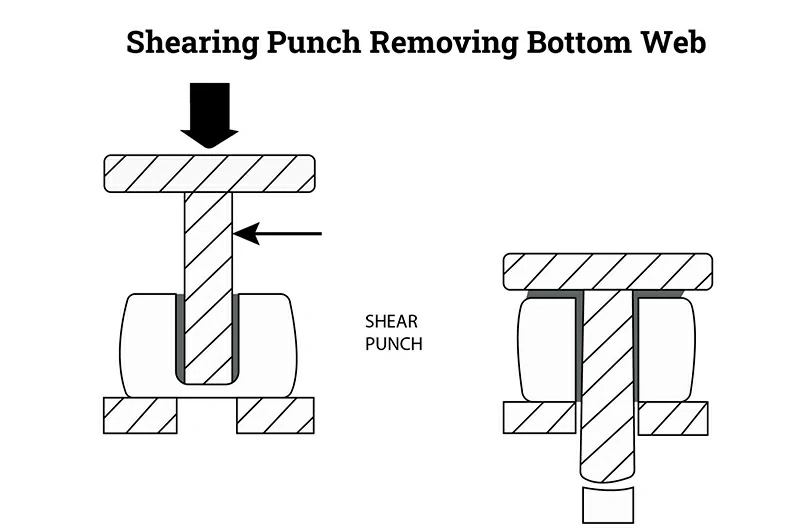
Mandrel and preheating
The piercing and shearing process creates a hole in the workpiece so that it can be placed on a mandrel, a blunt rod that is used to shape the annular hole. The mandrel, also called a saddle or idler, is usually made of steel or medium carbon steel and has the strength and durability required to apply the necessary force and withstand the stress of the workpiece compression.
The workpiece is heated to a temperature slightly below its recrystallization temperature before being placed on the mandrel. It is then rotated in incremental steps to forge the ring to its final size and shape. The mandrel, saddle, or idler presses the annular workpiece against the drive rolls, increasing its inner and outer diameters to the desired final dimensions.
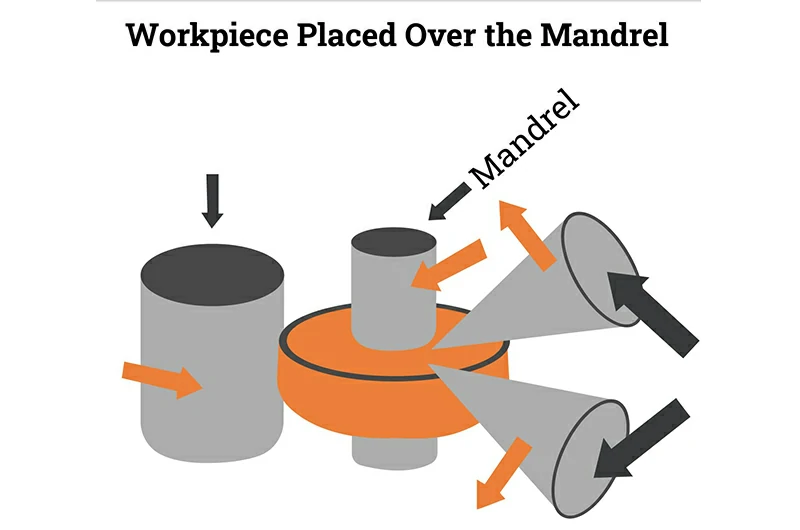
Main roll and ring rolling (core step)
The forming process begins with the gradual, progressive rotation of the preformed donut shape by the main rollers. As the donut rotates, the mandrel presses on its inside, pushing it against the main rollers. This combined rotation and pressure expands both the inside and outside diameter of the workpiece while thinning the wall.
In the picture below, you can see the main rollers to the left of the yellow workpiece and the mandrel to the right of the main rollers inside the workpiece. The mandrel presses the ring of the workpiece against the main rollers. This process is done slowly and with high precision to achieve the correct size and shape.
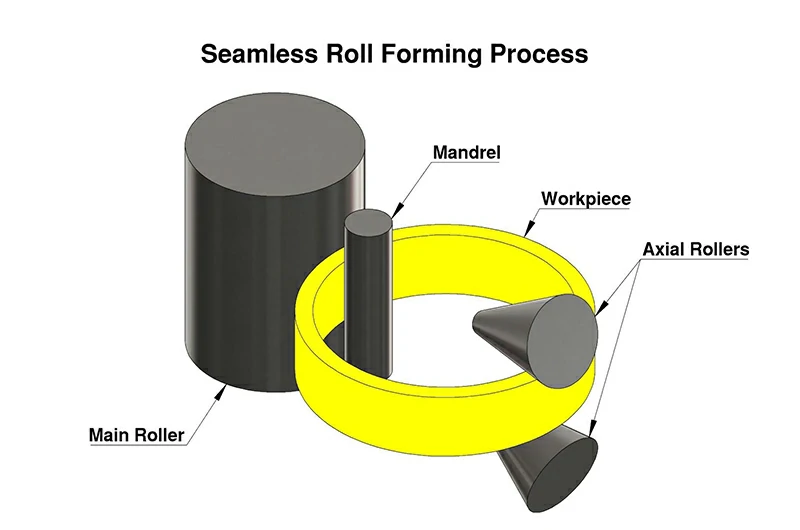
Axial roller
The mandrel and main rollers increase the diameter of the workpiece and reduce the wall thickness, while the axial rollers reduce the height of the cross-sectional area of the workpiece. The main rollers and mandrels provide a continuous, gradual rotation of the workpiece, which combined with the movement of the axial rollers ensures that the workpiece retains its grain structure.
Axial rollers are tapered rollers mounted horizontally opposite the mandrel and main rollers, which are displaced vertically. Their function is to compress and adjust the height of the workpiece as it slowly rotates between the idler and main rollers. The combined motion of the idler and axial rollers shapes the cross section of the workpiece into the desired shape.
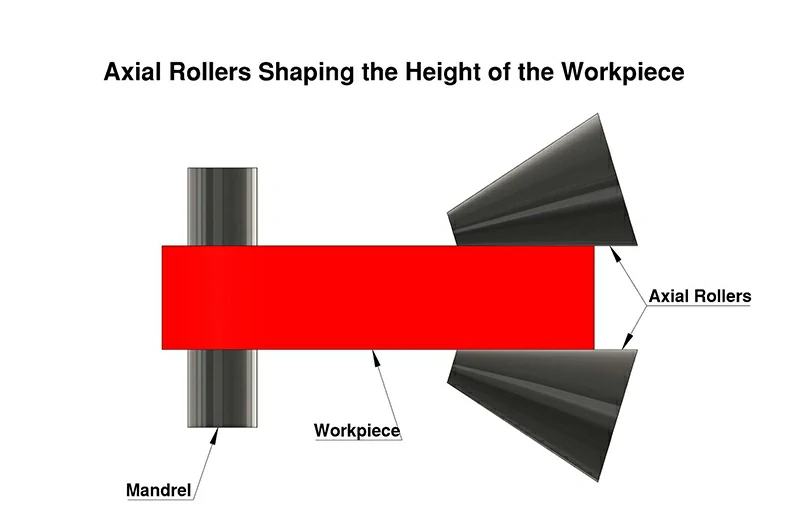
Complete rotation
The process of turning and forming the workpiece continues until the final dimensions are reached. This process, called seamless ring forging, involves forming the metal without cutting, welding or further forging. Throughout the process, the workpiece remains a solid, uninterrupted metal part.
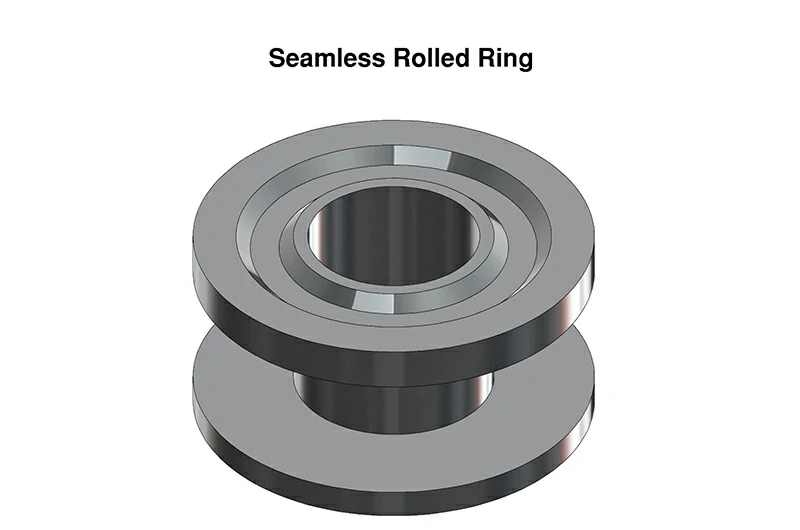
Heat treatment and tempering
Standard heat treatments such as T6, T651, annealing, quenching and tempering, solution + aging can be performed to improve mechanical properties and release residual stress.
Rough/finishing and structural preparation
It includes vertical/horizontal turning, drilling, chamfering, keyway and other processing to control dimensional tolerance and improve assembly adaptability.
Inspection and delivery
All workpieces support UT flaw detection, metallographic analysis, dimension measurement, mechanical property testing, and provide third-party inspection reports.
Types and comparison of ring rolling forming methods
The ring rolling process, as the core and decisive step in the manufacturing process of seamless rings, largely determines the dimensional accuracy, organizational streamline and mechanical properties of the product.
Although the overall manufacturing process is basically the same, Chalco can provide a variety of ring rolling process paths according to specific application requirements to adapt to different structures, load levels and precision control requirements. The main methods include:
| Forming method | Deformation Control | Features | Applicable product types |
| Radial rolling | Wall thickness control | Simple structure and fast processing | Medium size rings, normal load parts |
| Radial-axial composite rolling | Wall thickness + height | Control thickness and height simultaneously with high precision | High-end aviation and military parts |
| Vertical Ring Rolling | Multi-directional controlled | Suitable for heavy/direction-restricted parts | Large diameter, thick wall, heavy duty structural ring |
| Horizontal Rolling Ring Forming | Radial main control + auxiliary axial | Strong versatility, easy operation, and adaptable to various specifications | General structural parts, medium strength annular components |
Each rolling method deforms the workpiece in a specific way, resulting in a unique shape and grain structure. In addition, these methods are suitable for producing a variety of annular profiles, including flanges, pulleys and anti-friction rings. Chalco mainly adopts radial-axial composite forming solutions and is equipped with a closed-loop CNC system to ensure full dimensional consistency of inner and outer diameters, wall thickness and height.
Radial rolled ring forgings
Radial Rolled Ring Forging, also known as Hot Radial Rolled Ring (HRRR) Forging, is a method used to manufacture medium-sized bearing rings. In this process, the main rolls of the HRRR mill provide rotation and linear feed, while the mandrel facilitates passive rotation. The guide roll is located on the exit side of the main rolls and the signal roll is located on the other side. The process ends when the outer diameter of the ring contacts the guide roll.
During the entire rolling process, the ring wall is compressed radially, causing the metal to expand tangentially. The metal is not restricted in the axial direction by the rolls. This method is particularly effective for producing rectangular cross-sections, groove shapes and cross-shaped rings.
Radial-axial composite rolling
Radial axial ring rolling is the classic form of ring roll forming. As the mandrel squeezes the workpiece, the main roll rotates and idles due to the friction of the contact surface. The axial rolls rotate at the opposite speed and retract as the ring diameter increases. As the diameter increases, the upper tapered axial roll slides axially toward the lower one, causing the height of the ring to decrease. The guide roll contacts the outer diameter of the ring to maintain its round shape.
The radial-axial rolling ring forging process requires precise control of all three sets of rolls to ensure the quality and performance of the final product. This control is achieved through a closed-loop system that utilizes a single-point laser ranging tool for precise monitoring and adjustment.
Vertical ring forging
The traditional method of ring forming is usually carried out on a horizontal ring forging machine equipped with radial and axial ring rolling mills. The vertical version of this machine has two main rolls, a mandrel and several restraining rolls. The axes of the main rolls are inclined at an angle of 20 to 30 degrees to the horizontal and are driven by electric motors. The mandrel is driven by the idle rotation of the ring being formed and is mounted on a lifting frame that is raised by a hydraulic control to press the ring. The position of the restraining rolls is carefully designed to conform to the diameter of the ring and ensure its roundness.
Horizontal rolling ring forming
Horizontal roll ring forming is the most traditional and widely used method. In this process, the workpiece is moved radially and a mandrel is placed on the inside of the ring to press against the ring wall. Axial rollers located on the upper and lower part or top and bottom of the ring control its height. Centering rollers help maintain the smoothness and roundness of the ring, operating as idler rollers driven by the movement of the forged ring.
Why choose Seamless Rolled Ring Forging?
Compared with castings, welded rings, and rolled plate cuttings, seamless ring forgings have the following advantages:
- The grains flow naturally in the circumferential direction, greatly improving the fatigue life
- No weld structure to avoid leakage, breakage and welding stress concentration
- High strength-to-lightweight ratio, meeting the lightweight requirements of various high-end structures
- High material utilization rate, reduced waste, and the yield rate can reach more than 80%
- A variety of alloy and size combinations can be quickly customized with strong adaptability
Chalco seamless rolled ring related products recommended
In order to quickly match your current project needs, Chalco simultaneously provides the following ring products and derivative structural parts, supporting internal link expansion and customization instructions:
- Aluminum alloy seamless rolled rings: provide high-strength aluminum materials (such as 6061, 7075, 2219, etc.), widely used in aviation, rail transit and equipment manufacturing
- Titanium alloy seamless rolled rings: suitable for high temperature, high strength, corrosion resistance applications, supporting typical models such as TC4, TA2, TC11, etc.
- Steel seamless rolled rings: low alloy steel, stainless steel, high strength structural steel, etc., used in the fields of petroleum, nuclear power, pressure vessels, etc.
- Forged flange: used for high-pressure connection parts, with stable structure and strong impact resistance
- Forged pipe fittings: used in conjunction with pipeline systems, with pressure adaptability and size controllability
- Forged ring/special-shaped ring: flange + keyway + bevel + asymmetric structure composite processing can be carried out according to the drawing
Summary: submit drawings and start engineering supporting cooperation
Chalco has a complete material system, ring rolling equipment, heat treatment platform and quality control mechanism. It is your long-term partner for seamless rings in projects such as aviation structures, energy engineering, and heavy equipment manufacturing.
You are welcome to submit your drawings and requirements via email, online form or phone. We will provide the most suitable material recommendations and processing solutions.


